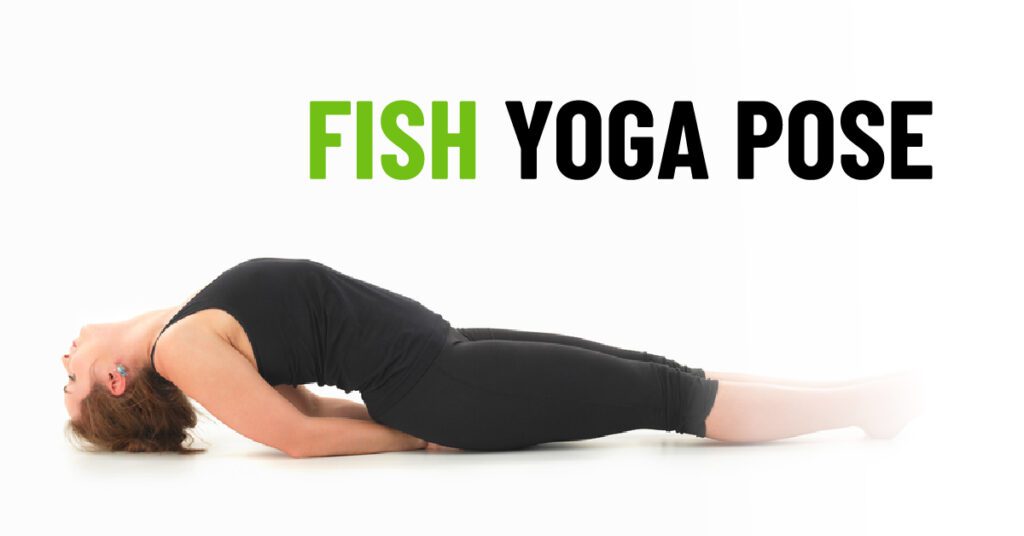How To Do Wheel Yoga Pose

Also available in
Are you looking to enhance your yoga practice with a challenging and invigorating pose? Look no further than the wheel yoga pose! This dynamic and powerful asana, also known as Chakrasana in Sanskrit, offers a multitude of benefits for both the body and mind. In this comprehensive guide, we will explore the wheel yoga pose in detail, including its technique, variations, benefits, precautions, and more.
What is the Wheel Yoga Pose?
The wheel yoga pose is also known as Urdhva Dhanurasana. It is a dynamic backbend that resembles the shape of a wheel when fully expressed. This pose is named after the Sanskrit words “urdhva,” meaning upward, “dhanu,” meaning bow, and “asana,” meaning pose. In the wheel pose, the practitioner forms a deep arch with the spine, supported by the hands and feet. This challenging asana engages the entire body, promoting strength, flexibility, and balance.
How to Perform the Wheel Yoga Pose
Step-by-step instructions:
Start by lying on your back with your knees bent and feet hip-width apart. Place your hands beside your shoulders, fingers pointing towards your shoulders.
Press through your palms and lift your shoulders off the mat, allowing your head to hang.
Inhale deeply, and as you exhale, push through your hands and feet to lift your hips and torso off the mat. Your arms and legs should be straight and strong.
Engage your core muscles and lengthen through your spine, reaching the crown of your head towards the mat.
If comfortable, you can try straightening your arms fully and bringing your head closer to the mat.
Hold the pose for 5-10 breaths, maintaining steady breathing.
To release, tuck your chin towards your chest, bend your arms, and slowly lower your body back down to the mat.
Modifications and Variations
The wheel yoga pose can be modified or adapted to suit different levels of flexibility and strength. Here are a few variations of the wheel yoga pose you can explore:
Supported Wheel Pose: If you are new to the pose or need extra support, place a yoga block against a wall and rest your hands on the block instead of the floor. This modification reduces the intensity of the backbend and provides added stability.
Bridge Pose: The Bridge pose, also known as Setu Bandhasana, is a gentler variation of the wheel pose. The Bridge pose offers similar benefits to the wheel pose but with less spinal extension.
Half-Wheel Pose: If you are still building the strength and flexibility required for the full-wheel pose, you can practice the half-wheel pose as a preparatory step.
Using Props: Props can be valuable tools to assist in achieving proper alignment and increasing accessibility in the wheel pose. Consider using a yoga strap around your thighs to prevent them from splaying outwards. Additionally, using a bolster or folded blankets under your upper back can provide support and help you maintain a more open chest and shoulder position.
Remember, it is essential to listen to your body and only go as far as feels comfortable for you. As you continue to practice and build strength and flexibility, you can gradually work towards the full expression of the wheel yoga pose.
Common Mistakes to Avoid
Collapsing Shoulders: It is crucial to avoid sinking into the shoulders when performing the wheel pose. Instead, actively engage the muscles of the upper back and shoulders to maintain stability and prevent strain.
Overarching the Neck: Be mindful of the position of your neck in the wheel pose. Avoid excessive arching or compressing the cervical spine. Instead, maintain a neutral neck position or gently tuck the chin towards the chest.
Lack of Engagement: The wheel pose requires full-body engagement to support the spine and maintain proper alignment. Remember to activate your core muscles, engage your glutes, and press through your hands and feet to distribute the weight evenly.
Not Breathing Deeply: It is common to hold your breath or take shallow breaths when in a challenging pose like the wheel. Focus on maintaining steady and deep breathing throughout the pose to promote relaxation and stability.
Rushing into the Pose: Give yourself time to warm up and prepare your body before attempting the wheel pose. Perform gentle backbends, stretches, and shoulder openers to gradually prepare the muscles and joints for the intensity of the pose.
By avoiding these common mistakes, you can ensure a safe and effective practice of the wheel yoga pose, reaping its full benefits.
Benefits of the Wheel Yoga Pose
The wheel yoga pose offers a wide range of physical, mental, and energetic benefits. Let’s delve into some of the significant advantages this pose has to offer:
1. Strengthening the Muscles
The wheel pose is a potent exercise for strengthening various muscle groups throughout the body. Here is how it can benefit different muscle areas:
Core Muscles: The wheel pose engages the abdominal muscles, including the rectus abdominis, obliques, and transverse abdominis. These muscles work together to stabilize the spine, promote core strength, and improve posture.
Back Muscles: The wheel pose targets the erector spinae, which are the muscles that run along the spine. These muscles are responsible for maintaining proper spinal alignment, supporting the back, and promoting overall back strength.
Shoulders and Arms: When performing the wheel pose, the shoulders and arms bear a significant amount of weight, which helps to strengthen the muscles in these areas. The triceps, deltoids, and muscles of the rotator cuff are engaged, improving upper body strength and stability.
Leg Muscles: The wheel pose activates the quadriceps, hamstrings, and gluteal muscles. These muscles play a crucial role in stabilizing the body, generating power, and enhancing lower body strength.
2. Increasing Spinal Flexibility
The wheel pose is renowned for its ability to increase spinal flexibility. By bending the spine into a deep backbend, this pose helps to counteract the effects of prolonged sitting and poor posture. Regular practice of the wheel pose can gradually improve spinal mobility, reduce stiffness, and increase the range of motion in the back.
As the wheel pose stretches the front of the body, it also opens the chest and shoulders, relieving tension and promoting better posture. The pose encourages a healthy extension of the spine, counterbalancing the forward flexion that often occurs in our daily activities.
3. Stimulating the Energy Centers
In yoga philosophy, the wheel yoga pose is associated with the opening and activation of the energy centers, or chakras, in the body. This pose particularly targets the Anahata, or heart chakra, located at the center of the chest. By opening the chest and expanding the heart space, the wheel pose can help release emotional blockages, promote self-acceptance, and cultivate a sense of compassion and love.
Additionally, the wheel pose stimulates the Manipura, or solar plexus chakra, located in the abdomen. The wheel pose can ignite the fire in the belly, empowering the practitioner and fostering a sense of inner strength and vitality.
Precautions and Contraindications
While the wheel yoga pose offers numerous benefits, it is essential to practice it mindfully and with caution, especially if you have certain health conditions or limitations. Here are some precautions and contraindications to consider:
1. Injury and Health Conditions
Back Injuries: If you have a history of back injuries, such as herniated discs or spinal issues, it is crucial to consult with a qualified yoga instructor or healthcare professional before attempting the wheel pose. Modifications or alternative poses may be necessary to avoid further injury.
Neck Injuries: Individuals with neck injuries or cervical spine conditions should approach the wheel pose with caution. It is important to keep the neck in a neutral position and avoid excessive strain on the cervical spine.
Wrist or Shoulder Injuries: The wheel pose places a significant amount of weight on the wrists and shoulders. If you have any existing wrist or shoulder injuries, it is advisable to modify the pose or seek guidance from a knowledgeable instructor.
High or Low Blood Pressure: If you have uncontrolled high or low blood pressure, it is advisable to avoid holding the wheel pose for an extended period of time, as it can affect blood circulation and potentially exacerbate your condition. Consult with your healthcare provider to determine if the pose is suitable for you.
2. Pregnancy and Menstruation
Pregnancy: Pregnant individuals should avoid practicing the wheel pose, especially during the later stages of pregnancy. As the pose involves deep back bending and pressure on the abdomen, it may not be safe for the developing baby. It is recommended to focus on more gentle and pregnancy-specific yoga poses during this time.
Menstruation: During menstruation, some individuals may experience increased sensitivity and discomfort in the lower back and abdomen. It is generally advisable to listen to your body and avoid practicing the wheel pose if it doesn’t feel comfortable. Instead, choose restorative poses that promote relaxation and ease tension.
3. Warm-up and Preparation
To prepare your body for the wheel pose and reduce the risk of injury, it is crucial to engage in a proper warm-up routine. Here are some warm-up exercises you can incorporate before attempting the wheel pose:
- Cat-Cow Pose
- Sphinx Pose
- Bridge Pose
By taking these precautions and incorporating a proper warm-up routine, you can practice the wheel pose safely and minimize the risk of injury.
Conclusion
The wheel yoga pose is also known as Urdhva Dhanurasana. It offers a multitude of benefits, including strengthening the muscles, increasing spinal flexibility, and stimulating the energy centers of the body. By practicing this advanced backbend with proper alignment and caution, you can experience the transformative effects it has on your physical and emotional well-being.
Remember to always approach the wheel pose mindfully, respect your body’s limitations, and seek guidance from a qualified yoga instructor if needed. Regular practice, patience, and consistency will allow you to progress in this challenging pose and reap its many rewards.
Frequently Asked Questions (FAQs)
What should I do if I feel discomfort or pain in the wheel pose?
It is essential to listen to your body during the wheel pose and modify or come out of the pose if you experience any discomfort or pain. Discomfort in the wrists, shoulders, or lower back can indicate misalignment or excessive strain. Always work within your body’s limits and consult with a yoga instructor if you have any concerns or persistent discomfort.
Can the wheel pose help alleviate back pain?
The wheel pose can be beneficial for individuals experiencing mild back pain when practiced under the guidance of a qualified instructor. However, if you have chronic or severe back pain, it is crucial to consult with a healthcare professional before attempting the pose.
How often should I practice the wheel pose?
The frequency of practicing the wheel pose will depend on your individual level of strength, flexibility, and overall yoga practice. It is generally recommended to start with a few times per week and gradually increase as your body becomes more accustomed to the pose. Always listen to your body and give yourself adequate time to rest and recover between sessions.






